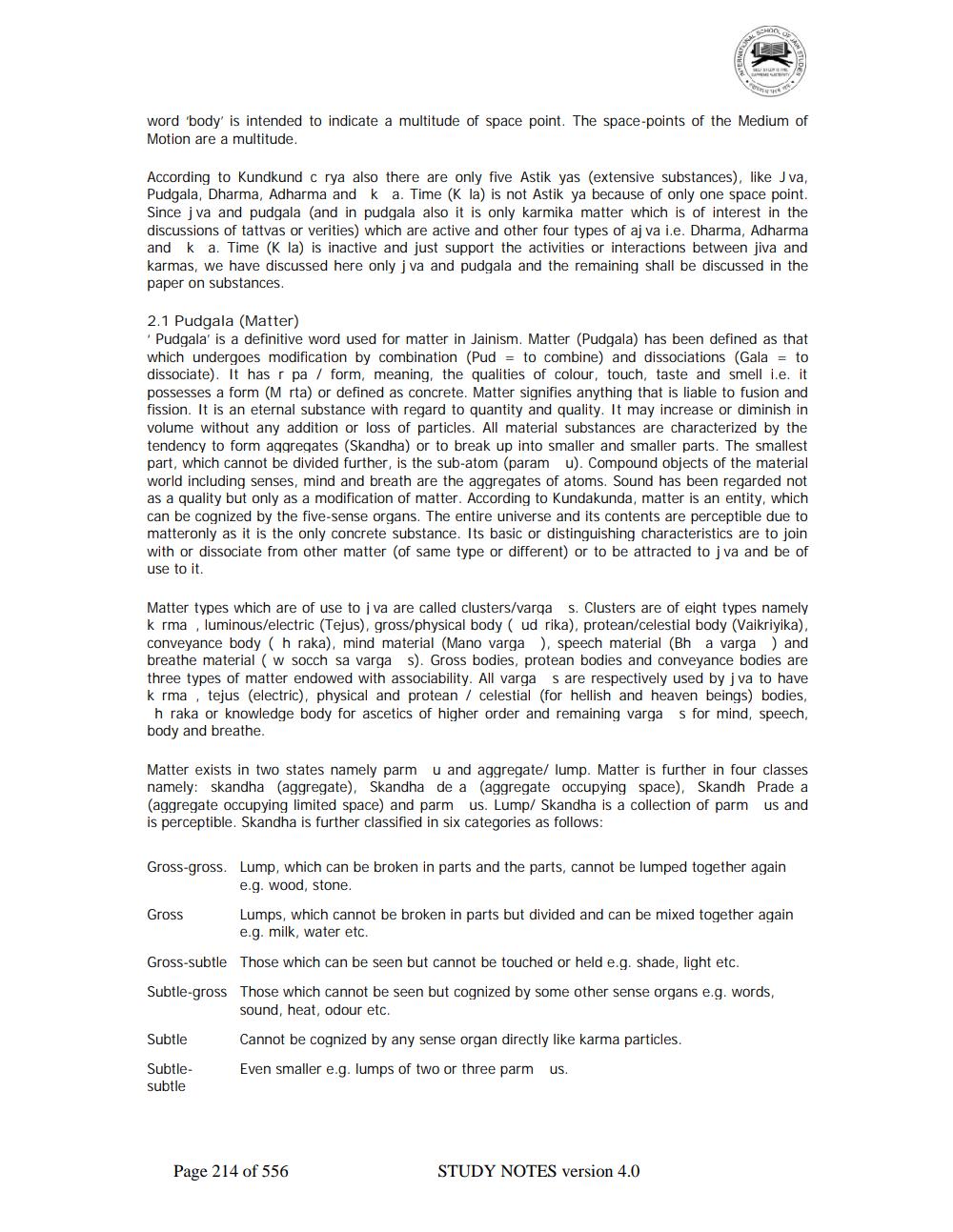________________
word 'body' is intended to indicate a multitude of space point. The space-points of the Medium of Motion are a multitude.
According to Kundkund c rya also there are only five Astik yas (extensive substances), like Jva, Pudgala, Dharma, Adharma and k a. Time (K la) is not Astik ya because of only one space point. Since j va and pudgala (and in pudgala also it is only karmika matter which is of interest in the discussions of tattvas or verities) which are active and other four types of aj va i.e. Dharma, Adharma and ka. Time (K la) is inactive and just support the activities or interactions between jiva and karmas, we have discussed here only j va and pudgala and the remaining shall be discussed in the paper on substances.
2.1 Pudgala (Matter)
'Pudgala' is a definitive word used for matter in Jainism. Matter (Pudgala) has been defined as that which undergoes modification by combination (Pud = to combine) and dissociations (Gala = to dissociate). It has r pa / form, meaning, the qualities of colour, touch, taste and smell i.e. it possesses a form (M rta) or defined as concrete. Matter signifies anything that is liable to fusion and fission. It is an eternal substance with regard to quantity and quality. It may increase or diminish in volume without any addition or loss of particles. All material substances are characterized by the tendency to form aggregates (Skandha) or to break up into smaller and smaller parts. The smallest part, which cannot be divided further, is the sub-atom (param u). Compound objects of the material world including senses, mind and breath are the aggregates of atoms. Sound has been regarded not as a quality but only as a modification of matter. According to Kundakunda, matter is an entity, which can be cognized by the five-sense organs. The entire universe and its contents are perceptible due to matteronly as it is the only concrete substance. Its basic or distinguishing characteristics are to join with or dissociate from other matter (of same type or different) or to be attracted to jva and be of use to it.
Matter types which are of use to i va are called clusters/varga s. Clusters are of eight types namely k rma, luminous/electric (Tejus), gross/physical body (ud rika), protean/celestial body (Vaikriyika), conveyance body (h raka), mind material (Mano varga ), speech material (Bh a varga ) and breathe material (w socch sa varga s). Gross bodies, protean bodies and conveyance bodies are three types of matter endowed with associability. All varga s are respectively used by j va to have k rma, tejus (electric), physical and protean / celestial (for hellish and heaven beings) bodies, h raka or knowledge body for ascetics of higher order and remaining varga s for mind, speech, body and breathe.
Matter exists in two states namely parm u and aggregate/ lump. Matter is further in four classes namely: skandha (aggregate), Skandha de a (aggregate occupying space), Skandh Prade a (aggregate occupying limited space) and parm us. Lump/ Skandha is a collection of parm us and is perceptible. Skandha is further classified in six categories as follows:
Gross-gross. Lump, which can be broken in parts and the parts, cannot be lumped together again
e.g. wood, stone.
Gross
Lumps, which cannot be broken in parts but divided and can be mixed together again e.g. milk, water etc.
Gross-subtle Those which can be seen but cannot be touched or held e.g. shade, light etc. Subtle-gross Those which cannot be seen but cognized by some other sense organs e.g. words,
sound, heat, odour etc.
Cannot be cognized by any sense organ directly like karma particles.
Even smaller e.g. lumps of two or three parm us.
Subtle
Subtlesubtle
Page 214 of 556
STUDY NOTES version 4.0




